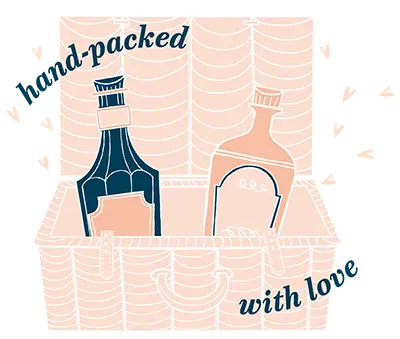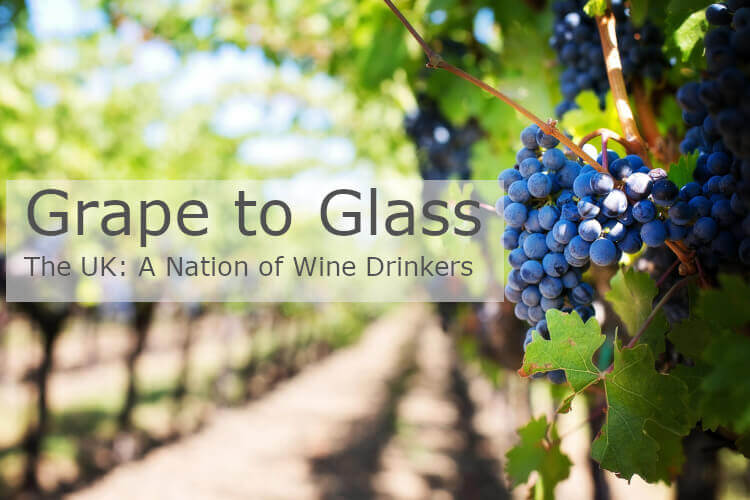
JUMP TO... How it's MadeGlass Guide Grape Varieties
- Picking the grapes
- Crushing the grapes
- Fermenting the grapes into wine
- Ageing the wine
- Bottling the wine
Glossary
Racking – The process of siphoning wine from one container to another, intended to remove any sediment left over from the crushing process
Tannin – A textural element which gives wine its dryness
Must – Freshly crushed juice which contains the skins, seeds and stems of the grapes
New World – Wine growing areas outside of the traditional winemaking regions
Mouthfeel – The sensation of wine in the mouth
Punt – Dimple at the bottom of a wine bottle
Noble grapes – Varieties of grapes famous for producing top quality wines

3. Fermenting the grapes into wine
Picking the grapes
It’s all in the timing – harvesting the perfect grapes requires a touch of science! Winemakers traditionally harvest white grapes first and move on the red varieties later on in the year, with many choosing traditional hand-picking methods over automated harvesting. Picking the grapes by hand is gentler and preserves the quality of the valuable grapes; this method allows trained pickers to ensure only the best grapes are picked for production. Many wineries choose to harvest at night to take advantage of the cooler temperatures; not only does this benefit the staff - meaning they avoid toiling in the mid-day sun; picking the grapes when cold intensifies the aromas and flavours, giving winemakers more control over the fermentation process. Particularly important for white and rose wines, grapes harvested at cooler temperatures produce a crispness difficult to replicate using other methods.Fact: A hand-picker can collect up to 2 tonnes of grapes in an 8 hour day while a machine can collect 80-200 tonnes!
Crushing the grapes
Once the grapes have been picked, it’s time to extract the juice! The grapes are de-stemmed, usually by machine and quality checked before being crushed. Traditionally, grapes were crushed by foot and celebrated the end of the harvest, although these days the work is mostly completed by machines. Once crushed, the grapes used for white wine are transferred into a press, where the must is extracted and they are separated from their skins; this is a key part of the white winemaking process as it prevents any unwanted colour or tannins leaking into the wine! The extracted juice is transferred into settling tanks before being racked. During the racking process, the must is filtered to ensure any sediment has gone before the fermentation process begins.After the de-stemming and crushing process, red wine grapes are transferred to fermentation vats skins ‘n all. The skins are left intact in order to give the wine colour. Rose wine is processed in the same way as red, with skins intact until fermentation begins, where the process closely follows that of white wine.
Fermenting the grapes
Fermentation is the process which converts the must into the wine we all know and love. The two basic ingredients required for the fermenting process are sugar and yeast. The yeast is added to consume the naturally occurring sugar found in the grapes and produces the alcohol and carbon dioxide which contributes to the taste and smell of the end product. The wine is usually fermented in steel tanks or oak casks, and the vessel in which the wine is fermented has a huge impact on the taste and mouthfeel of the wine! Oak barrels allow the slow ingress of oxygen which provides the wine with a smooth and silky feel. Oaked wines typically have strong vanilla and smoke-like flavours and aromas. During the 1950s, steel barrels revolutionised winemaking, allowing winemakers to produce their product on a larger scale and providing them with greater control over the fermentation process. Steel tanks are considered to be more durable (oak barrels only last 2-3 years!), impart no additional flavour to the wine and limit the amount of wine lost during the fermentation process. Win fermented in steel is typically zesty, refreshing and juicer than its oak aged counterparts. Fermentation continues until all of the sugar is converted into alcohol, and can take anywhere from 10 days to several months to complete.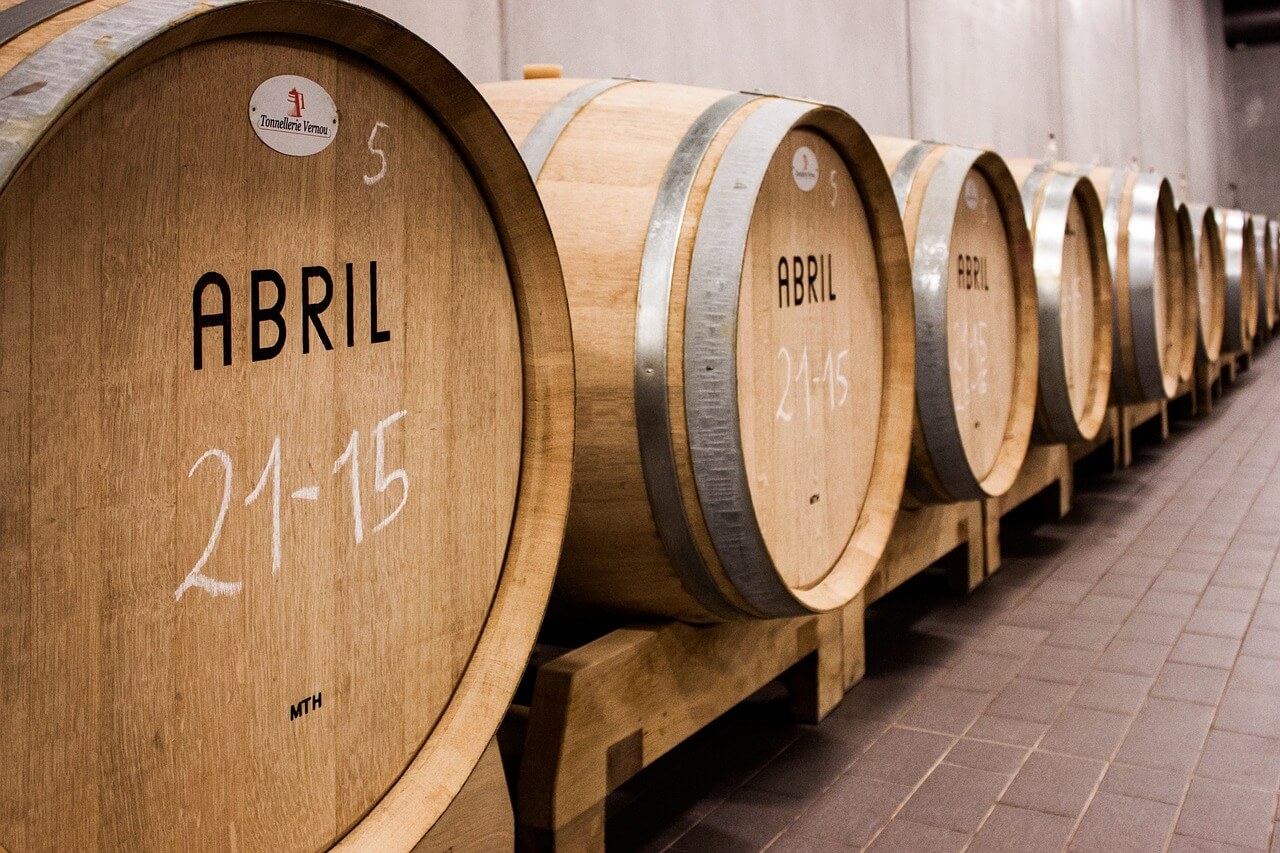
Ageing the wine
Once fermentation is complete, the freshly made wine is transferred ageing vats. During the ageing process, the acidity in the wine decreases, undesirable substances leftover from fermentation are expelled and complex compounds affecting flavour and aroma are formed – basically ageing is what makes it tasty!Similar to the fermentation process, wine can be aged in both steel and oak casks depending on the flavours desired by the winemaker. Oak aged wines have a lower tannin levels and consequently are less dry than those aged in steel.
Some wines are ready for bottling after just a few months, while some dry reds need ageing for up to two years before they are ready to be bottled.
Bottling the wine
The final step in the winemaking process is the bottling! Once the wine has been sufficiently aged and the bottles sterilised, the wine is prepared for bottling. Wine bottles vary widely based on the kind of wine inside them, the most common being the Bordeaux-style bottle. Originating (perhaps not surprisingly!) from the Bordeaux wine region of France, the Bordeaux is a tall bottle with straight sides, high defined shoulders and a deep punt in the base. The punt is intended to catch any remaining sediment leftover from the winemaking process. These bottles are traditionally dark green when used for red wines, light green for dry whites and clear for sweeter, white wines. Similarly, Burgundy-style bottles are also used for wines produced in other parts of the world, although they were originally used to bottle the Pinot Noir and Chardonnay wines traditionally made in the region. Usually green and wide at the base, Burgundy-style bottles have a shorter neck and gentle sloping sides that create the iconic silhouette synonymous with the region. Alsace or Mosel-style bottles are tall and thin with a long sloping neck, and are nearly always made from green glass. Historically used to bottle wines from the Mosel area of Germany and Alsace in France, today these bottles are used for a wide variety of wines, but most commonly for Riesling and variations upon it. Makers of New World wines use this bottle exclusively for sweet wines, favouring a variety of other shapes for drier wines.Red Wine Glasses
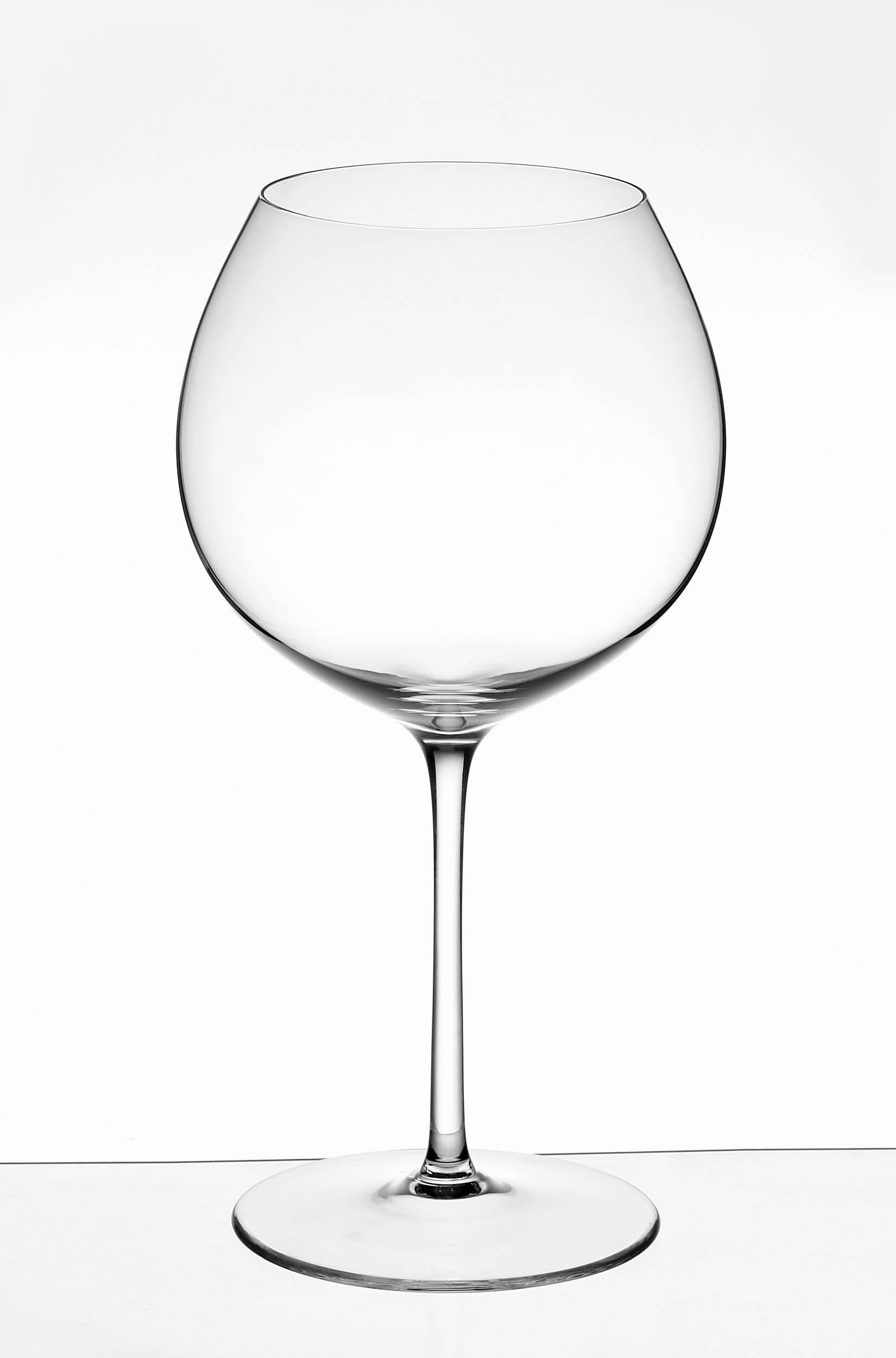 Burgundy
The large, rounded body of the Burgundy glass allows aromas of more delicate wines to accumulate in the bowl while also enhancing the acidity and intensity of fuller-bodied red wines.
The thin rim makes it easy to drink from while the narrow opening guides the wine to the tip of the tongue, allowing the drinker to fully appreciate the flavour variations between acidity and fruity notes.
Also suitable for: Beaujolais
Wines to avoid: Bordeaux red
Burgundy
The large, rounded body of the Burgundy glass allows aromas of more delicate wines to accumulate in the bowl while also enhancing the acidity and intensity of fuller-bodied red wines.
The thin rim makes it easy to drink from while the narrow opening guides the wine to the tip of the tongue, allowing the drinker to fully appreciate the flavour variations between acidity and fruity notes.
Also suitable for: Beaujolais
Wines to avoid: Bordeaux red
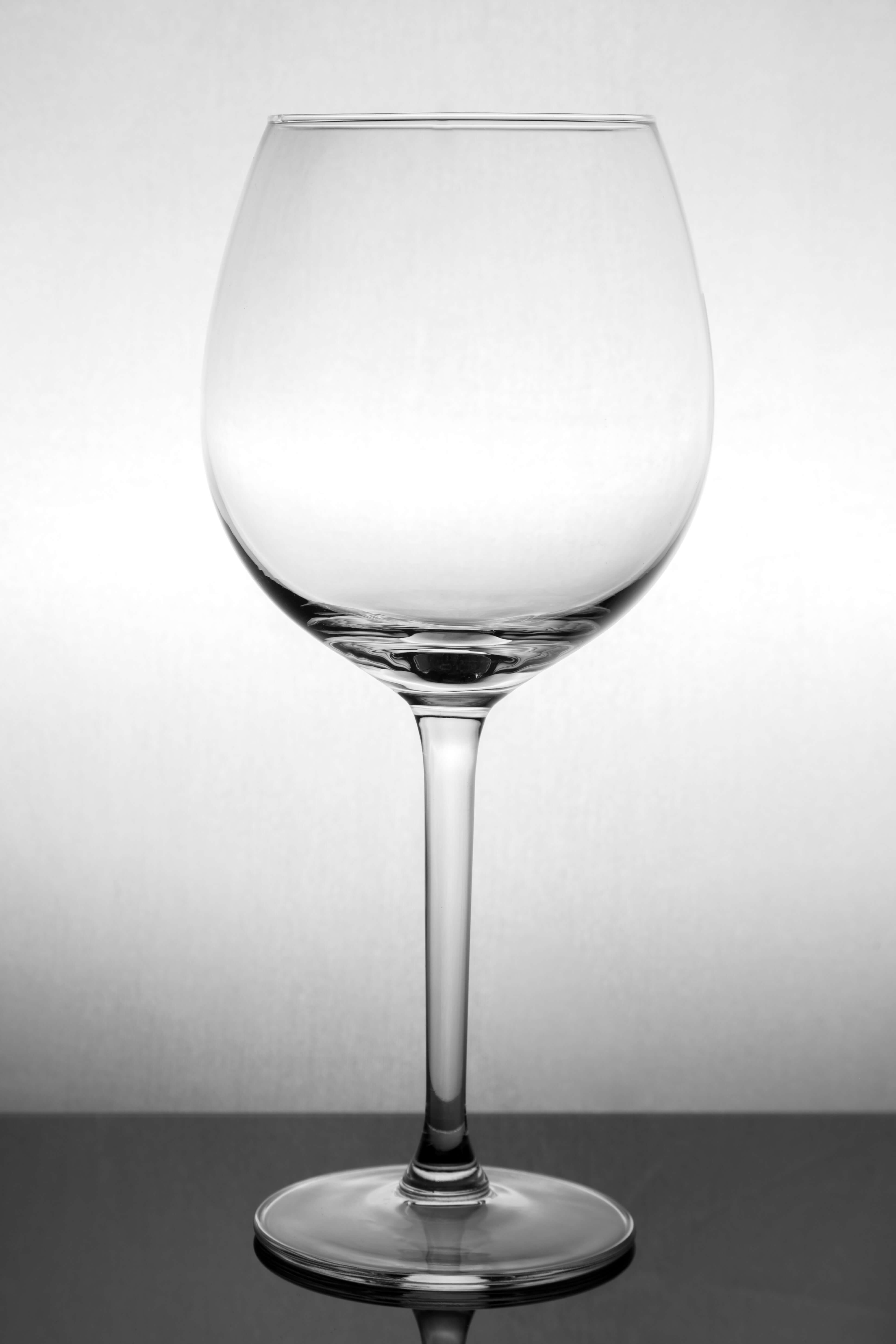 Pinot Noir
Possessing many similar qualities to the Burgundy glass, the Pinot Noir glass is somewhat of a chameleon and as such can be used for any light-bodied red wines. The large bowl provides ample space for the wine to come into contact with the air, triggering the oxidation process and subsequently improving flavour and enhancing aromas.
A tapered rim targets the wine at the front of the mouth, directing the flavours straight to the nose and tip of the tongue to accentuate the dry, tannic characteristics of Pinot wines.
Also suitable for: Grenache, Zinfandel
Wines to avoid: Cabernet Sauvignon
Pinot Noir
Possessing many similar qualities to the Burgundy glass, the Pinot Noir glass is somewhat of a chameleon and as such can be used for any light-bodied red wines. The large bowl provides ample space for the wine to come into contact with the air, triggering the oxidation process and subsequently improving flavour and enhancing aromas.
A tapered rim targets the wine at the front of the mouth, directing the flavours straight to the nose and tip of the tongue to accentuate the dry, tannic characteristics of Pinot wines.
Also suitable for: Grenache, Zinfandel
Wines to avoid: Cabernet Sauvignon
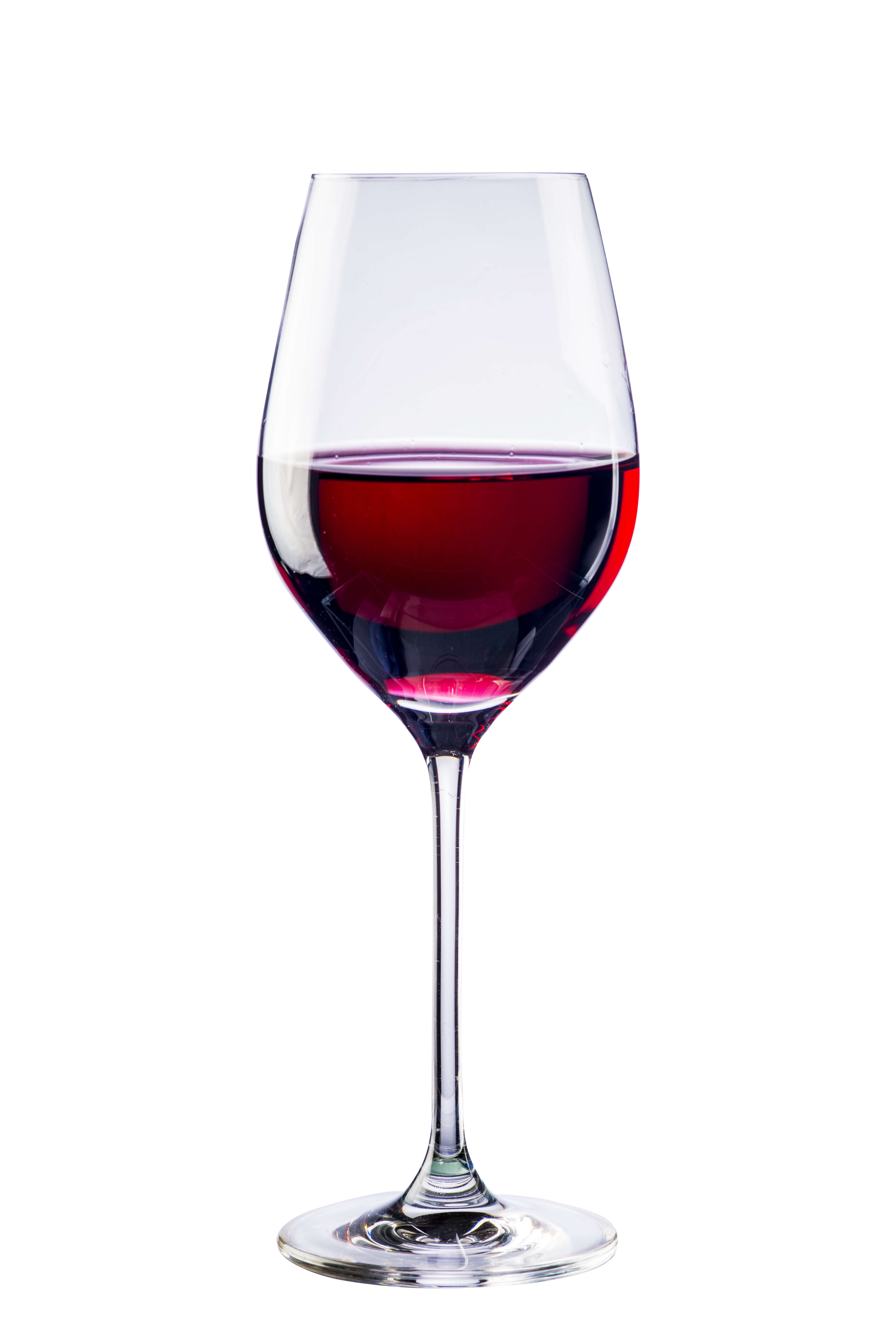 Bordeaux
The tallest of all red wine glasses, the Bordeaux has a long stem and slightly narrower bowl than other red wine glasses. The height of the glass creates distance between the wine and the mouth, enabling the wine to aerate, softening the tannin and creating a smoother finish.
Crafted for full bodied red wines, the Bordeaux directs the wine to the back of the mouth to minimise bitterness and emphasise the full spectrum of flavours within the wine.
Also suitable for: Bordeaux blends, Cabernet Sauvignon, Malbec, Merlot, Syrah
Wines to avoid: New Zealand Pinot Noir
Bordeaux
The tallest of all red wine glasses, the Bordeaux has a long stem and slightly narrower bowl than other red wine glasses. The height of the glass creates distance between the wine and the mouth, enabling the wine to aerate, softening the tannin and creating a smoother finish.
Crafted for full bodied red wines, the Bordeaux directs the wine to the back of the mouth to minimise bitterness and emphasise the full spectrum of flavours within the wine.
Also suitable for: Bordeaux blends, Cabernet Sauvignon, Malbec, Merlot, Syrah
Wines to avoid: New Zealand Pinot Noir
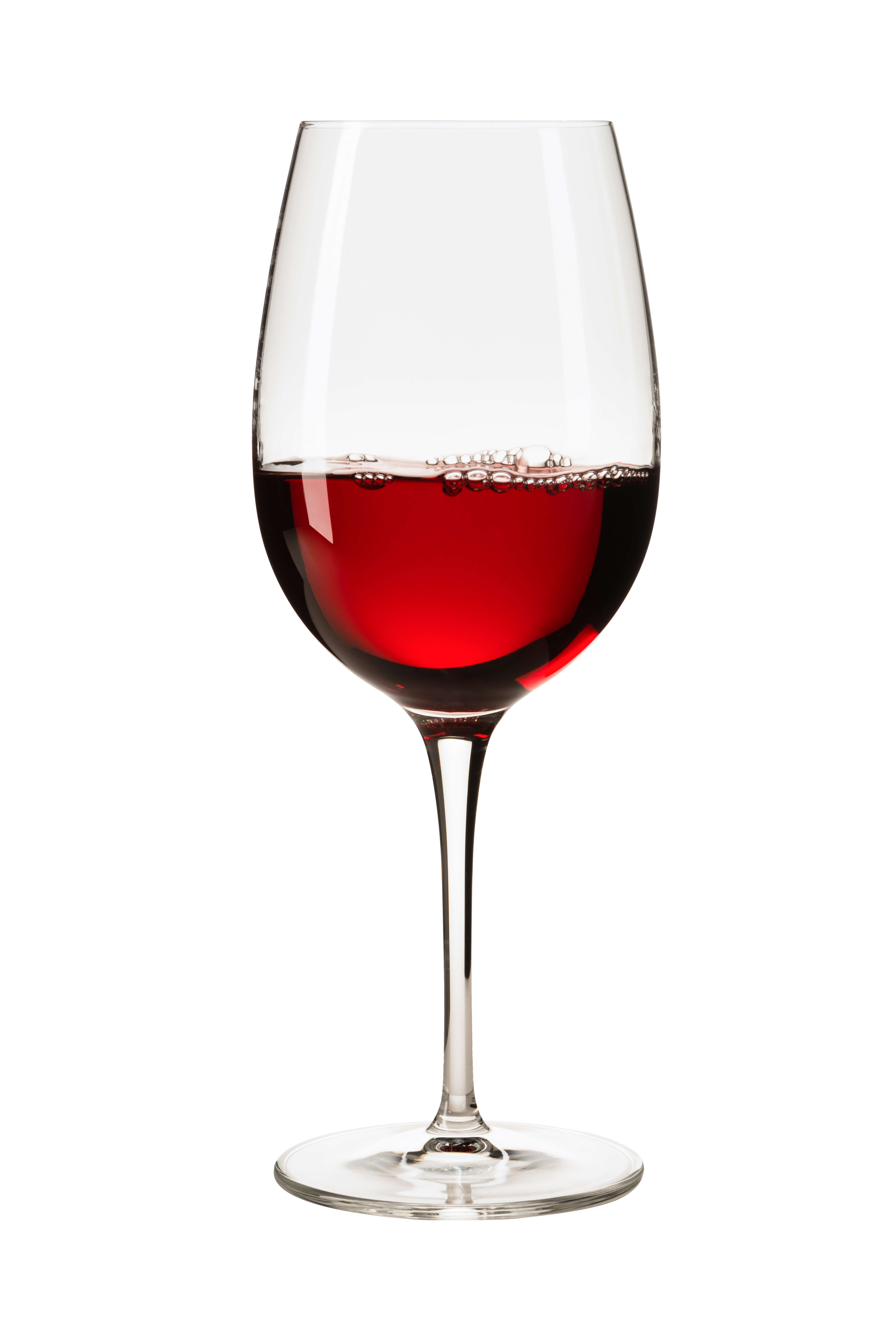 Cabernet Sauvignon
Widely regarded as a universal wine glass, the Cabernet glass has a broad bowl which concentrates the intense aromas of the wine near the narrow mouth of the glass.
Specifically created to moderate acidity by sending wine directly to the back of the mouth, the large surface area of the bowl allows ample space for the oxidation process, lessening the tannins and enhancing the fruit flavours within the wine.
Also suitable for: Malbec, Merlot
Cabernet Sauvignon
Widely regarded as a universal wine glass, the Cabernet glass has a broad bowl which concentrates the intense aromas of the wine near the narrow mouth of the glass.
Specifically created to moderate acidity by sending wine directly to the back of the mouth, the large surface area of the bowl allows ample space for the oxidation process, lessening the tannins and enhancing the fruit flavours within the wine.
Also suitable for: Malbec, Merlot
Wines to avoid: Burgundy red
White Wine Glasses
White wines are traditionally served in wine glasses with a smaller bowl and narrow opening in order to conserve floral aromas and to exaggerate the acidity in the wine.
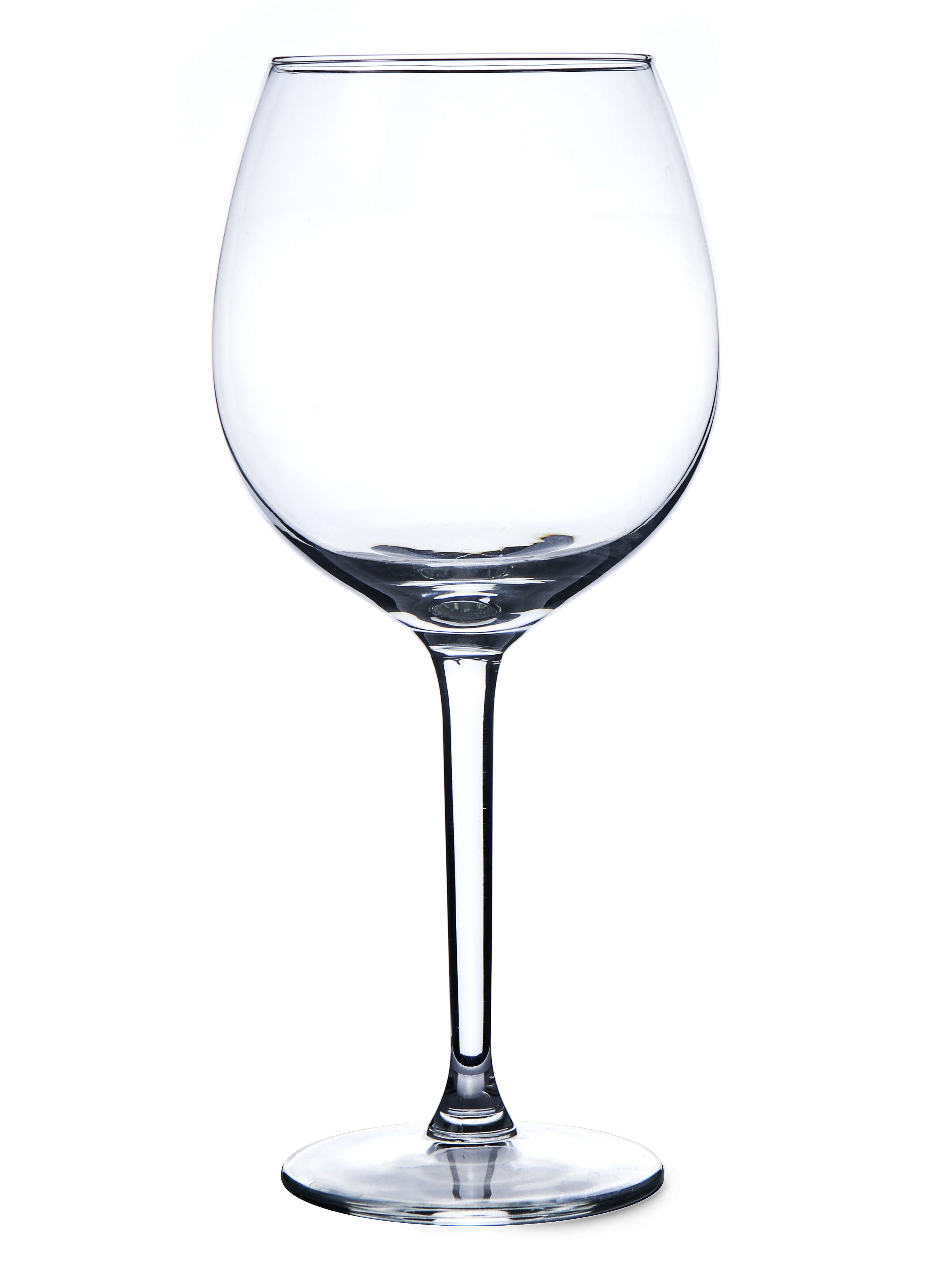 Chardonnay
Shallower than your average white wine glass, the Chardonnay glass has a wide mouth and large rounded bowl similar to traditional red wine glasses. The large bowl provides sufficient space for the oxidation process, while the wide opening balances out sweetness and acidity in the wine.
The large opening directs wine to the tip and sides of the tongue, allowing the palate to detect complex layers of spice and fruit flavours in Chardonnay wines.
Also suitable for: Pinot Noir, Burgundy
Wines to avoid: Whites from Southern Portugal
Chardonnay
Shallower than your average white wine glass, the Chardonnay glass has a wide mouth and large rounded bowl similar to traditional red wine glasses. The large bowl provides sufficient space for the oxidation process, while the wide opening balances out sweetness and acidity in the wine.
The large opening directs wine to the tip and sides of the tongue, allowing the palate to detect complex layers of spice and fruit flavours in Chardonnay wines.
Also suitable for: Pinot Noir, Burgundy
Wines to avoid: Whites from Southern Portugal
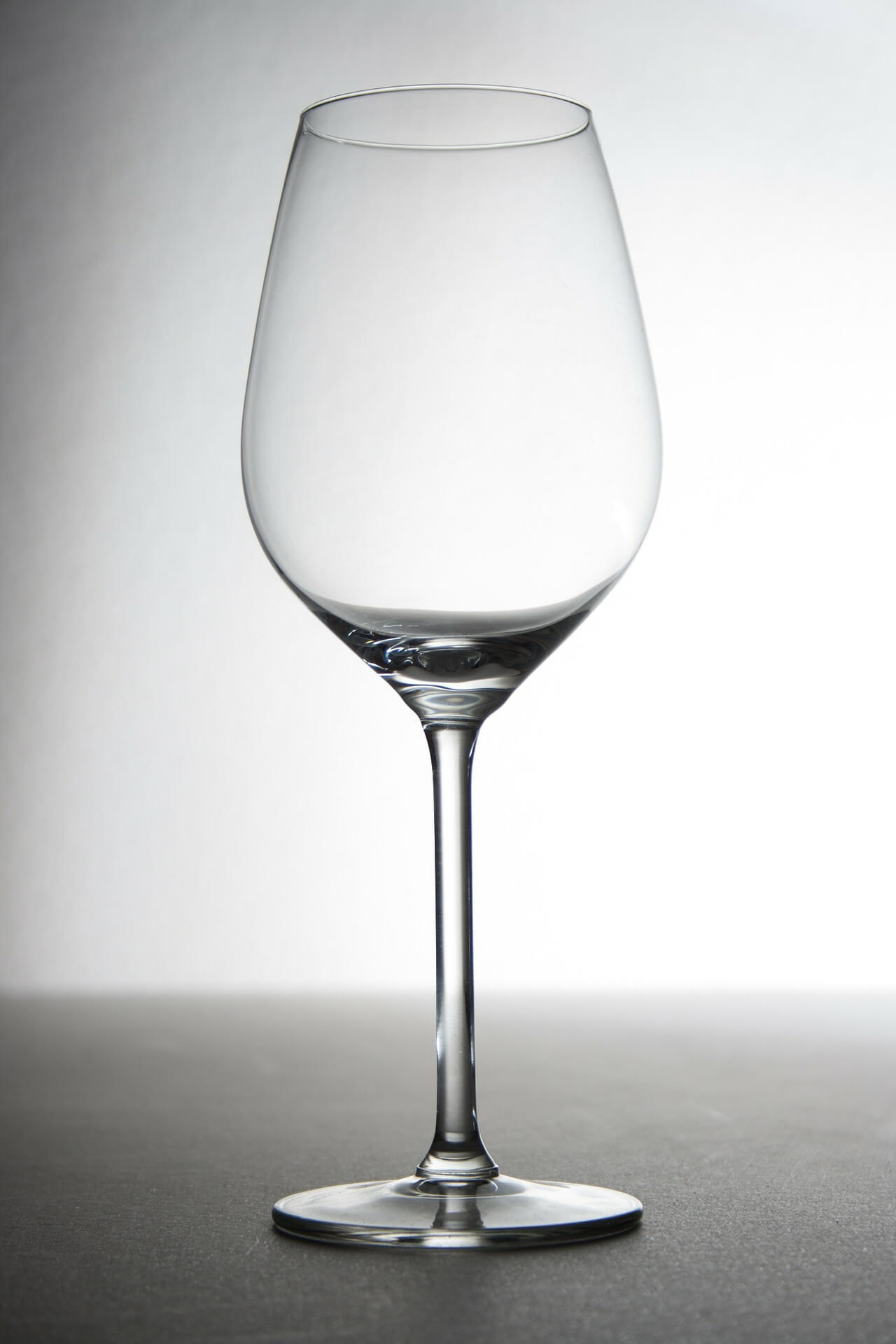 Sauvignon Blanc
A petit glass, the Sauvignon Blanc glass is short with a slender bowl that captures delicate floral and fruity aromas, and a tapered opening that directs these aromas directly to the nose.
The shape of this glass causes the tongue to naturally form a ‘U’ shape which guides the wine to the centre of the palate, avoiding the sides to reduce acidity and create a smooth finish.
Also suitable for: Pinot Grigio, Riesling, Chenin Blanc, Bordeaux
Sauvignon Blanc
A petit glass, the Sauvignon Blanc glass is short with a slender bowl that captures delicate floral and fruity aromas, and a tapered opening that directs these aromas directly to the nose.
The shape of this glass causes the tongue to naturally form a ‘U’ shape which guides the wine to the centre of the palate, avoiding the sides to reduce acidity and create a smooth finish.
Also suitable for: Pinot Grigio, Riesling, Chenin Blanc, Bordeaux
Wines to avoid:
Californian Chardonnay

Look through the Grape Varieties:
- Cabernet Sauvignon
- Merlot
- Syrah (Shiraz)
- Pinot Noir
- Chardonnay
- Sauvignon Blanc
- Riesling
- Sémillon
- Chenin Blanc
Cabernet Sauvignon
Hailed as the world’s most famous variety of grape, Cabernet Sauvignon is a natural cross between Cabernet Franc and
Sauvignon Blanc. which can be found growing on vines across the globe. Originally from the Bordeaux region of France, Cabernet Sauvignon can be found growing on vines across the globe; and makes some of the world’s finest red wines whether on its own, or blended with other varieties of grape.
Produced in: France, California, Australia, Chile, South Africa, Argentina
Flavours:
[caption id="attachment_2123" align="alignleft" width="129"]Delicious with:
Meat: Beef, Lamb, Tuna
Vegetables: Portobello mushrooms, Thyme
Cheese: Cheddar, Gouda, Gorgonzola
Merlot
Serve at: Room temp 16 – 20oc
Glass type: Bordeaux Notable wines: Saint-Emilion, PomerolDelicious with:
Meat – Beef, Lamb, Duck, Turkey, Chicken
Vegetables – Tomatoes, Mushrooms, Garlic
Cheese – Blue cheese, Cheddar, Gorgonzola
Syrah (Shiraz)
The offspring of the Dureza berry and the white-skinned, Mondeuse Blanche grape, Syrah is the only red wine grape currently grown in the Northern Rhone Valley. Known as Shiraz in the New World, Syrah grapes prefer drier climates and soil and produce dark and full-bodied red wines. Australia’s most planted red variety. Due to the high level of tannins present in the wine, Shiraz has one of the highest levels of health benefiting antioxidants compared to other wines.
Produced in: France, Australia, California, South America
Flavours:
[caption id="attachment_2129" align="alignleft" width="130"]Delicious with:
Meat – Beef, Lamb, Duck, Barbequed red meats
Vegetables – Beans, Rosemary, Sage
Cheese –Blue cheese, Goats cheese, Camembert
Pinot Noir
One of the oldest and the world’s most popular light-bodied red wines, the Pinot Noir grape is native to the Burgundy wine region of France, where it is used to produce dry, light-bodied wines. Pinot Noir takes its name from the French word for pine (Pinot) due to the way the fruit forms while on the vine, and the French word for black (Noir) which refers to the dark colour of the fruit.
Pinot Noir is one of the few red grapes that are made into red, white, rose and sparkling wines!
Produced in: France, California, Germany, Argentina, Italy, New Zealand
Flavours:
[caption id="attachment_2137" align="alignleft" width="130"]Delicious with:
Meat – Duck, Chicken, Pork, Salmon, Tuna
Vegetables – Mushrooms, Peas, Olives
Cheese – Brie, Gorgonzola, Goats cheese
Chardonnay
The most popular grape for white wine production worldwide, the Chardonnay grape is also used to produce Champagne, sparkling and dessert wines. Historically grown in the vineyards of Burgundy, this grapes ability to grow under almost any weather conditions has seen it soar in popularity across the globe.
Grown in warm conditions Chardonnay produces wines with higher alcohol content and low acidity, in cooler climes the end product has a high acidity, leaving a tingling sensation on the tongue.
Produced in: France, California, Australia, New Zealand, Italy, South Africa
Flavours:
[caption id="attachment_2150" align="alignleft" width="130"]Delicious with:
Meat – Pork, Shellfish, Salmon
Vegetables – Mushrooms, Tomatoes, Truffles
Cheese – Cheddar, Brie, Blue Cheese
Sauvignon Blanc
Still prominently produced in its heartland of the Loire Valley, central France, Sauvignon Blanc translates literally to ‘wild white’ and is famous for its fruity flavours and dry finish. Grown in vineyards across the globe, Sauvignon Blanc is an extremely adaptable grape, thriving in both warm and cooler climates. Despite being a green-skinned grape, Sauvignon Blanc is the mother species of the deep red Cabernet Sauvignon grape.
Produced in: Australia, New Zealand, South Africa, Chile, California
Flavours:
[caption id="attachment_2132" align="alignleft" width="152"]Delicious with:
Meat – Oysters, Crab, Sole
Vegetables – Pesto, Asparagus, Artichokes
Cheese – Goats cheese, Gouda, Parmesan
Riesling
Delicious with:
Meat – Duck, Pork, Bacon, Chicken, Shrimp, Crab
Vegetables – Red onion, Carrot, Squash, Peppers
Cheese – Brie, Camembert
Sémillon
Grown predominantly in Bordeaux, the golden-skinned Sémillon grape is a key ingredient in the regions famous blended wines, while in Australia Sémillon is produced as a single varietal wine. Often picked early in the season, Sémillon produces dry, light-bodied wines, low in acidity and with high alcohol content.
Produced in: France, Australia, Chile, Argentina
Flavours:
[caption id="attachment_2143" align="alignleft" width="130"]Delicious with
Meat - Chicken, Pork, Turkey, Duck, Trout, Catfish, Cod, Halibut
Vegetables - Squash, Peppers, Leeks, Peppers, Potatoes
Cheese - Cheddar, Gruyere
Chenin Blanc
Prized for its versatility, the Chenin Blanc grape has been harvested in France’s Loire Valley for over 1,000 years. Prized for its versatility, Chenin Blanc can be used to produce a range of wine styles from dry and crisp to rich, sweeter wines. Today, South Africa is the largest producer of Chenin Blanc, harvesting over 50% of the worlds Chenin Blanc grapes every year.
Produced in: France, South Africa, Argentina
Flavours:
[caption id="attachment_2135" align="alignleft" width="130"]To find the perfect wine to send to family, friends or for business, see our large range of wine hampers.
This blog was posted 2019-05-16 07:48:00 .








